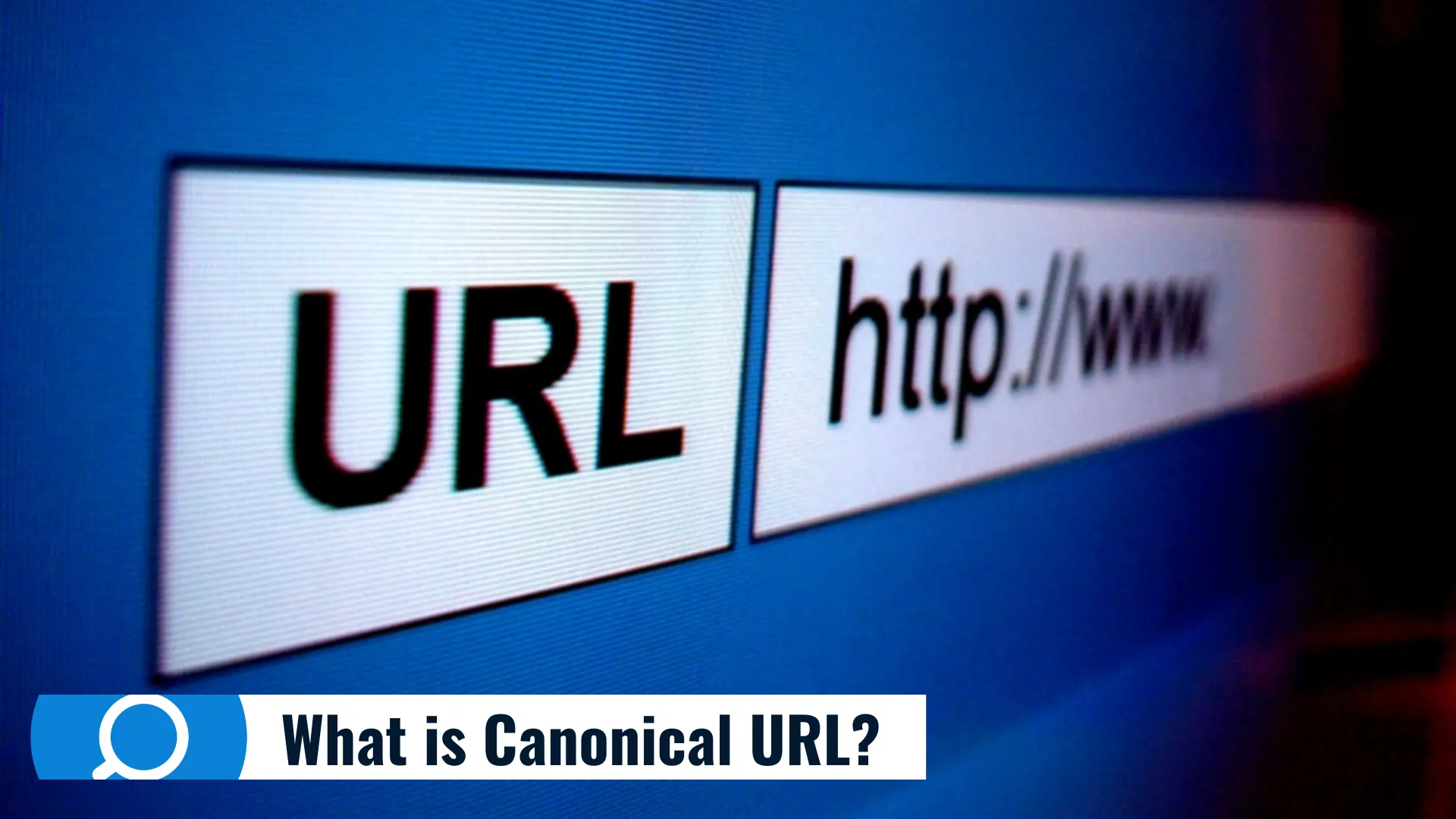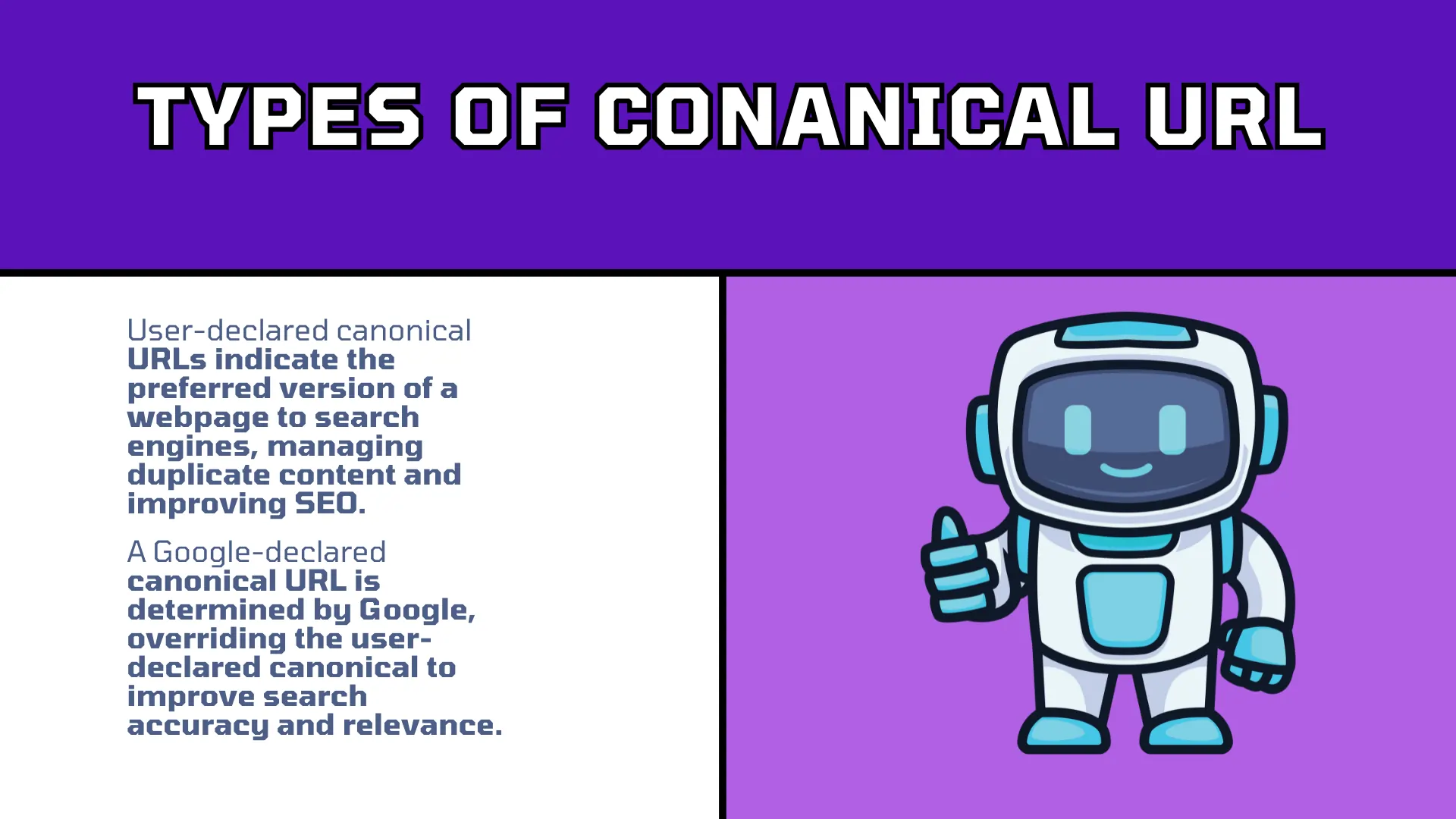What is Canonical URL?

Canonical URL Explained
When there are copies on a webpage, search engines like Google designate one URL of pages having the same content as the primary URL, which is known as the canonical URL. The purpose of selecting this URL is to prevent search results from displaying unuseful content that lacks distinctive value. simply a canonical URL is a specific URL chosen from a set of duplicate pages that search engines treat as the authoritative version.
Canonical URLs are important for SEO since they ensure that search engines see the main version of your page and help avoid duplicate content problems. This raises your website’s search engine ranking and guarantees that your information is seen by the right people.
Example:
- Canonical URL: https://example.com/blog/
- Alternate URL: https://example.com/blog/?page=1
Types of Conanical URL
User-Declared Canonical
A user-declared canonical is the URL you identify as the preferred version of a page by using the canonical tag in HTML code. This tag informs search engines which URL you believe is the authoritative source among duplicate or similar pages. If you have many URLs with comparable content, you may put a canonical tag in the <head> portion of each page to point to the preferred URL.
Example: <link rel=”canonical” href=”https://www.pages.com/preferred-page” />
By doing so, you clearly tell search engines which URLs should be indexed and rated, consolidating the SEO value of all duplicate pages into the chosen URL.
Google-Declared Canonical
Google-declared canonical is the URL that Google decides to treat as the canonical version, regardless of the user-declared canonical tag. Google utilizes its own algorithms and criteria to select the most authoritative or relevant URL among duplicates.
Like for example Google may select https://www.pages.com/alternate-page as the canonical URL if it believes that this URL has greater significance or authority, even if you designate: https://www.pages.com/preferred-page as the canonical URL.
You May Also Like to Read: What are Backlinks and Why are they Important in SEO?

What Is Canonical Tag?
A canonical tag, also known as rel=canonical, is a brief segment of HTML code that aids search engines in distinguishing the “main” version of a website from other versions that are either identical or strikingly similar.
Canonical tags are used in SEO to inform Google of the version of your page that you want to show up in search results, to combine link equity from duplicate pages, and to enhance website crawling and indexing.
Here’s an example of canonical tag can look like on the webpage:
<link rel=”canonical” href=”https://pages.com/blog/robots-txt/” />
Importance of Canonical Tags & URL In SEO
Avoiding Duplicate Content
Canonical tags assist in resolving issues with similar or duplicate information by informing search engines that there is a standard resource or more relevant webpage. When the same or extremely similar content appears on several URLs, it is considered duplicate content. This may confuse search engines, possibly resulting in problems with ranking and diminished SEO value. By assisting search engines in determining which page to index and rank, canonical helps them avoid the penalty imposed by duplicate material.
Link Equity Consolidation
As part of a planned SEO approach known as “link equity consolidation,” several related pages on a website are redirected to or linked from a single, authoritative page. Duplicate content might cause link equity to be distributed among several URLs, which lowers your material’s potential for overall search engine ranking. Canonical URLs point to a single preferred version of the page, which helps to consolidate link equity. This implies that the canonical URL’s SEO strength will be enhanced by all of the links pointing to the different duplicates.
Effecting Crawl Budget
The quantity of pages on a website that search engines can crawl and index in a specific amount of time is known as their crawl budget. Numerous duplicate pages on a website can waste this crawl budget because it takes time for search engines to index different versions of the same information. Search engines can be directed to prioritize the preferred version of a website by employing canonical URLs, which maximizes the crawl budget. This enhances the general functionality and search visibility of your website by making it simpler for search engines to locate and index original and valuable information on your website.
You May Also Like to Read: Best Practices To Avoid Duplicate Content
When to Use Conanical URL
E-commerce Sites
The same product may frequently be available through several URLs in e-commerce due to differences in sorting, filtering, or categorization. A product may, for example, be sold under several categories, such as “Men’s Shoes” and “Sale Items,” each of which would provide a different URL. In the absence of canonical tags, these URLs may be seen by search engines as distinct pages, creating problems with duplicate content and reducing their SEO value. You can designate the main product page as the preferred version and ensure that search engines index the proper URL and all link equity is aggregated by using canonical URLs.
Tracking Parameters
The same page may seem different depending on the tracking parameters that are added to URLs for marketing or analytical reasons. Examples of such URLs are pages.com/product?utm_campaign=spring_sale and pages.com/product?utm_source=newsletter, which lead to the same material, but search engines perceive them as distinct pages. By using canonical URLs, you may direct users to the main version of the page (pages.com/product), preventing the spread of link equity and preventing duplicate content.
Print-Friendly Versions of Pages
Web pages that are optimized for printing are frequently provided in print-friendly versions. In addition to the primary URL pages.com/article, these versions typically feature URLs like pages.com/article/print. Canonical URLs ought to be utilized to designate the primary version because the content is virtually identical. By doing this, search engines are prevented from indexing the print and regular versions as distinct entities, which may result in fines for duplicate content.
When Republishing Content on Other Sites
Canonical URLs are essential for identifying the original source of material when it is syndicated or republished on other websites. Search engines can better determine which version is authoritative by using this method. When a blog post is republished on a partner website, for instance, make sure the republished content has a canonical link pointing to your website’s original piece. This avoids possible SEO problems associated with duplicate material by guaranteeing that your site receives credit and ranking benefits for the content.
Best Practices
Absolute URLs
SEO specialists advise using absolute URLs to minimize confusion and other problems, particularly when establishing canonical tags for several websites. While using canonical tags, utilize absolute URLs. Ensuring that the chosen versions are continuously displayed on a website is imperative, encompassing everything from internal links to sitemaps.
Self-Referencing Canonical
Even if there isn’t a duplicate page for a certain tag, use self-referencing canonical tags on all pages. Search engines would regard URLs that have distinct variations—like those that include parameters—as two different URLs. The self-referencing canonical element gives search engines precise instructions on which page should be indexed and show up in SERPs, preventing the incorrect URL from being crawled.
Add self-referential canonical tags to each page of your website to maximize its performance. Canonical tags do not need to be added to the primary page they can be added subsequently to newly created duplicate pages.
Canonicalization SEO Audit
You should always start with an SEO audit before canonicalization. By doing this, it is ensured that no canonicalization has begun, which could result in multiple tags on pages and other problems.
To make sure that similar or duplicate material includes a tag, it is imperative to check the website for canonical tags. Additionally, confirm that the pages are indexable and crawlable and that the tag leads to the correct page.
Using Good SEO Tools
To optimize your SEO potential, add the appropriate tools. Your site’s rankability can be raised with a variety of SEO tools. However, only a few facilitate canonicalization. Tools like Google Search Console, ScreamingFrog, Yoast SEO or RankMath helps greatly.
Conclusion
Canonical URLs are crucial for enhancing SEO and preventing problems with duplicate content. The primary version of a webpage that search engines identify among duplicate pages is known as the canonical URL. To guarantee that your content appears in search results and prevent dilution, you can help search engines determine which page to index and rank by providing a canonical URL. This procedure increases your website’s total search exposure, prevents wasted crawl budget, and consolidates link equity. Whether on print-friendly versions, e-commerce sites, pages with tracking parameters, or republished content, always utilize canonical tags correctly. This guarantees a website that is SEO-friendly, more streamlined, and efficient.
Thanks For Reading: What is Canonical URL?
Partner With Naumaan Oman
Recent Posts
Working Together Ideas come to life
No matter how big your company is, as you expand and reach new highs you’ll want an agency to have your back. One with a process
360presence@gmail.com

© 2023 360PRESENCE All rights Reserved
















